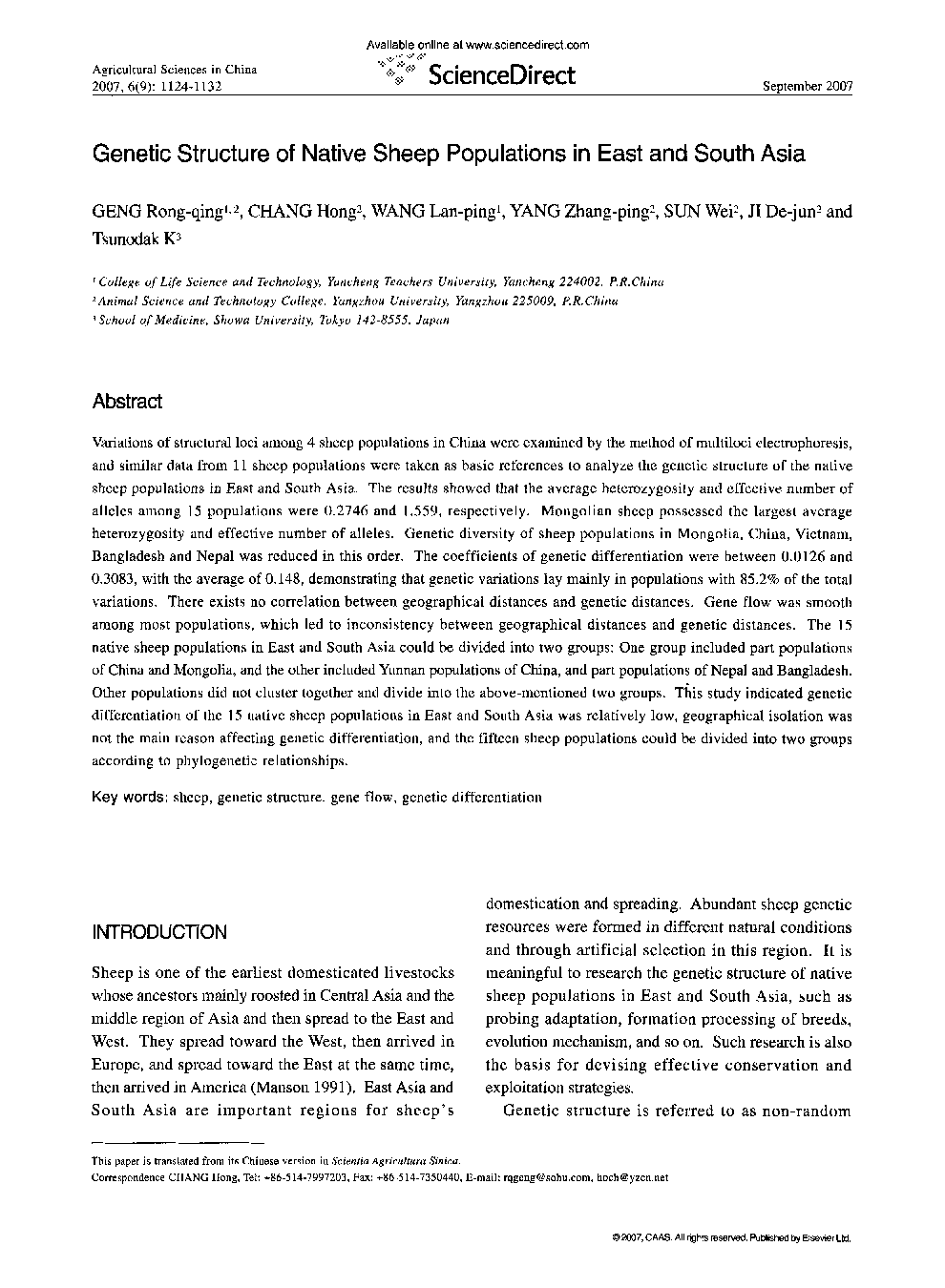| Article ID | Journal | Published Year | Pages | File Type |
|---|---|---|---|---|
| 4490764 | Agricultural Sciences in China | 2007 | 9 Pages |
Variations of structural loci among 4 sheep populations in China were examined by the method of multiloci electrophoresis, and similar data from 11 sheep populations were taken as basic references to analyze the genetic structure of the native sheep populations in East and South Asia. The results showed that the average heterozygosity and effective number of alleles among 15 populations were 0.2746 and 1.559, respectively. Mongolian sheep possessed the largest average heterozygosity and effective number of alleles. Genetic diversity of sheep populations in Mongolia, China, Vietnam, Bangladesh and Nepal was reduced in this order. The coefficients of genetic differentiation were between 0.0126 and 0.3083, with the average of 0.148, demonstrating that genetic variations lay mainly in populations with 85.2% of the total variations. There exists no correlation between geographical distances and genetic distances. Gene flow was smooth among most populations, which led to inconsistency between geographical distances and genetic distances. The 15 native sheep populations in East and South Asia could be divided into two groups: One group included part populations of China and Mongolia, and the other included Yunnan populations of China, and part populations of Nepal and Bangladesh. Other populations did not cluster together and divide into the above-mentioned two groups. This study indicated genetic differentiation of the 15 native sheep populations in East and South Asia was relatively low, geographical isolation was not the main reason affecting genetic differentiation, and the fifteen sheep populations could be divided into two groups according to phylogenetic relationships.
